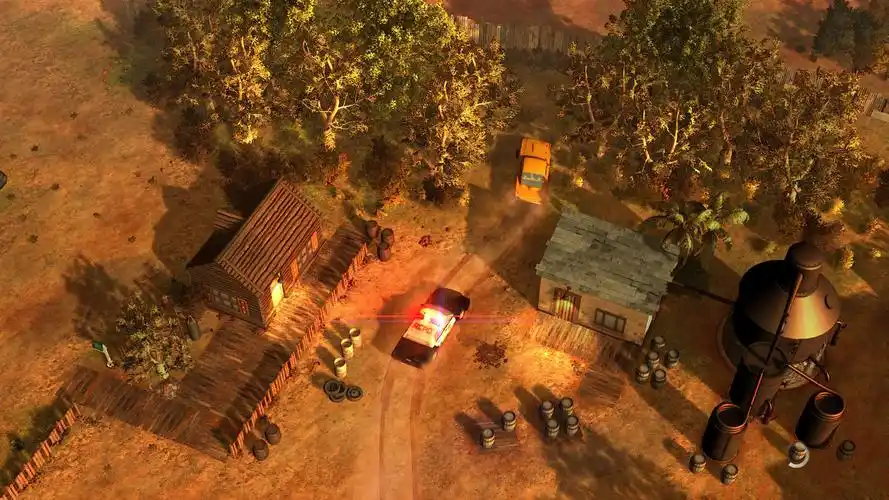Title: Beyond the Call: How the "Respond Missions" Expansion Redefines Empathy in 911 Operator Simulator VR
The virtual reality landscape is often dominated by fantastical escapism, from wielding lightsabers to exploring alien worlds. Yet, some of the most profound and impactful experiences emerge from simulations grounded in stark, human reality. 911 Operator Simulator VR carved a unique niche in this space, tasking players not with conquest, but with compassion and critical thinking under pressure. Its newly launched expansion, "Respond Missions," doesn't just add content; it fundamentally completes the emotional and gameplay loop, transforming the title from a compelling dispatch simulator into a holistic, heart-wrenching, and deeply human portrayal of emergency response.
The core game excelled at capturing the high-stakes tension of the call center. The crackle of the radio, the frantic voices on the headset, and the weight of every decision made from a stationary chair created an unparalleled sense of responsibility. Players learned to multitask, prioritize emergencies, and guide panicked civilians through the worst moments of their lives—all from a distance. However, this distance was both the game’s strength and its inherent limitation. You heard the chaos, but you never truly had to step into it. The "Respond Missions" expansion shatters that barrier.
From Voice to Boots on the Ground
The expansion’s core mechanic is a seamless transition from dispatcher to first responder. Once you’ve managed the initial call, gathered crucial information, and dispatched the appropriate units, a new option emerges: "Respond Personally." Donning a VR headset, you are no longer just a voice; you are now a paramedic, a firefighter, or a police officer on the scene. The sterile, data-driven interface of the call center is replaced by the visceral, immersive, and often chaotic environment of the emergency itself.
This shift is a masterstroke in VR design. The sense of scale and presence is overwhelming. A house fire described as "a structure blaze on Maple Avenue" becomes a towering inferno, with heat haze warping your vision and the roar of flames drowning out all other sound. A medical call for a "cardiac event" transforms into an intimate, stressful scenario where you must physically perform CPR on a virtual patient, your controllers mimicking the precise rhythm and depth of chest compressions. The expansion forces you to confront the tangible consequences of the decisions you made minutes earlier from the safety of your desk.
The Weight of Presence
Where the base game dealt in information, "Respond Missions" deals in humanity. As a dispatcher, a "car accident with injuries" is a pin on a map and a set of statistics. As a responder, it’s a scene of twisted metal, the smell of gasoline, and the desperate pleas of a trapped victim. The expansion introduces a new layer of emotional depth through environmental storytelling and nuanced character interactions.
You’re not just putting out a fire; you’re searching for a family’s pet, hearing the children cry as you carry it to safety. You’re not just applying a tourniquet; you’re holding a person’s hand, maintaining eye contact, and offering words of reassurance as sirens grow closer. These moments of human connection, facilitated by the intimate nature of VR, elevate the experience beyond a simple simulation. It becomes an empathy engine, fostering a profound understanding of the courage and compassion required by real-world first responders.
Enhanced Gameplay and Strategic Depth
"Respond Missions" is not merely an emotional tour; it introduces significant and challenging new gameplay systems. Each profession comes with its own specialized equipment and procedures. As a paramedic, you must physically use a defibrillator, administer epinephrine from a med-kit, and assess vital signs. As a firefighter, you must manage hose pressure, choose the correct extinguisher for different fire types, and execute precise ventilation cuts.
This physicality makes every mission intensely engaging. The pressure is immense. Did you, as the dispatcher, ask the right questions to determine if the patient had a history of diabetes? That information now directly informs your choice of treatment on the scene. Did you correctly dispatch a second fire engine to that warehouse blaze? You’ll be grateful for the backup when the roof begins to collapse. The expansion creates a powerful feedback loop where your performance in the call center directly impacts your chances of success on the ground, reinforcing the importance of every single action.
A Tribute to Real Heroes

Ultimately, the "Respond Missions" expansion serves as a powerful tribute to the men and women of emergency services. By experiencing both sides of the radio—the calm, analytical mind in the chair and the brave, decisive action in the field—players gain a holistic appreciation for the entire ecosystem of public safety. It highlights the invisible partnership between dispatcher and responder, showing how each role is irreplaceable and interdependent.
911 Operator Simulator VR: Respond Missions is a landmark expansion. It successfully bridges the gap between strategic management and visceral action, between hearing about trauma and confronting it. It is a challenging, sobering, and ultimately rewarding experience that uses the immersive power of VR not for escapism, but for education and empathy. It pushes the boundary of what a simulation can be, leaving players with not just a sense of accomplishment, but a renewed respect for the real-life heroes who answer the call every day.
















